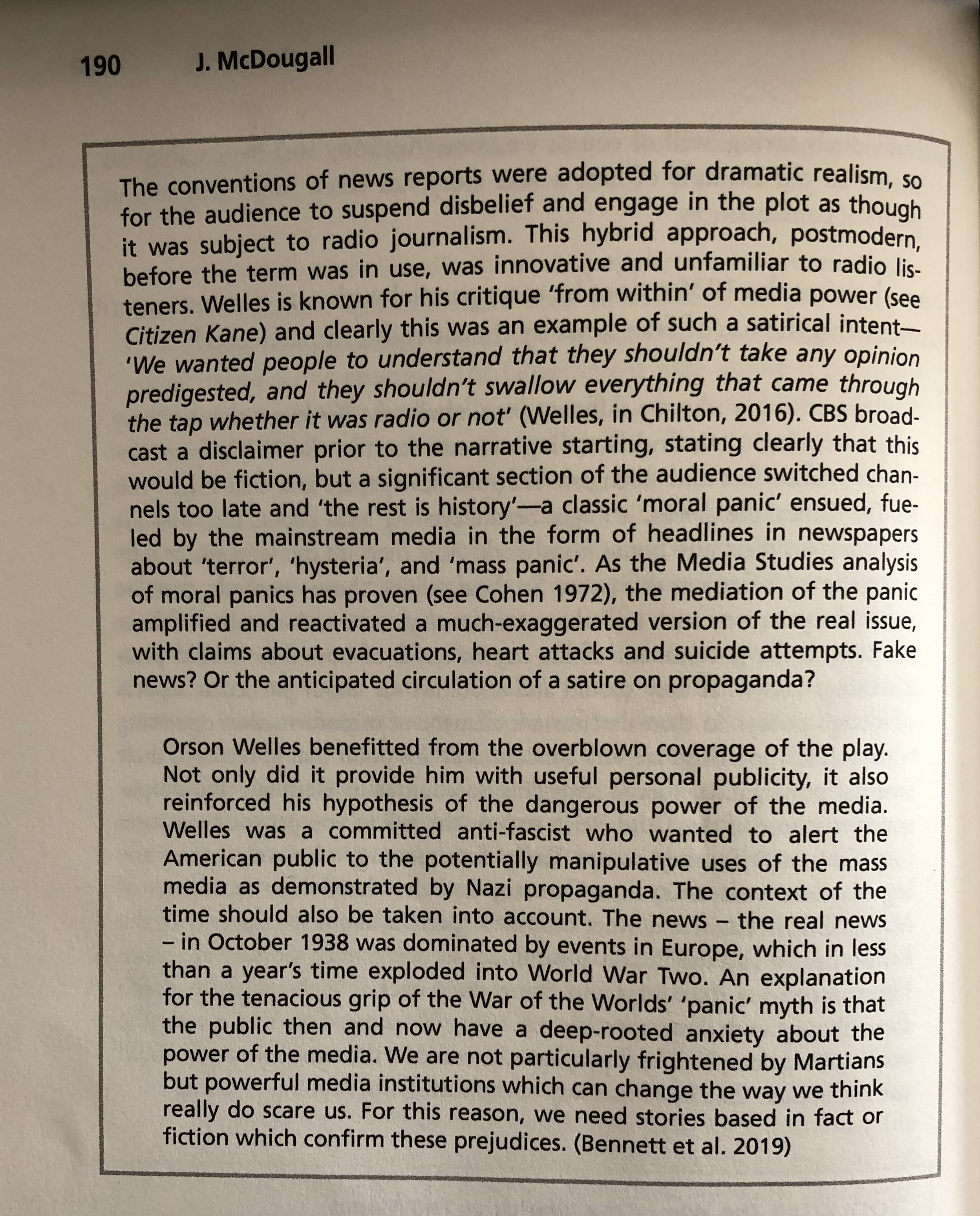- The episode is famous for inciting a panic by convincing some members of the listening audience that a Martian invasion was taking place, though the scale of panic is disputed, as the program had relatively few listeners.
- “The War of the Worlds” was the 17th episode of the CBS Radio series The Mercury Theatre on the Air, which was broadcast at 8 pm ET on October 30, 1938
- The program’s format is a simulated live newscast of developing events. The first two-thirds of the hour-long play is a contemporary retelling of events of the novel, presented as news bulletins interrupting programs of dance music.
- “I had conceived the idea of doing a radio broadcast in such a manner that a crisis would actually seem to be happening,” said Welles, “and would be broadcast in such a dramatized form as to appear to be a real event taking place at that time, rather than a mere radio play.
- The radio program begins as a simulation of a normal evening radio broadcast featuring a weather report and music by “Ramon Raquello and His Orchestra” live from a local hotel ballroom
- Radio silence at 30:47
War of the Worlds can be considered in a historical context as it provides an interesting study of the power and influence of radio as a form during its early days of broadcasting. It is also useful to consider the product in a social, cultural and political context when considering audience responses to the programme. It was first broadcast on the eve of World War II and reflected fears of invasion in the US and concerns about international relations.


